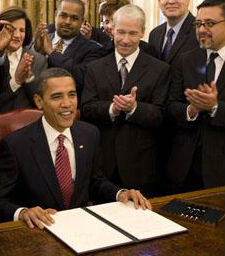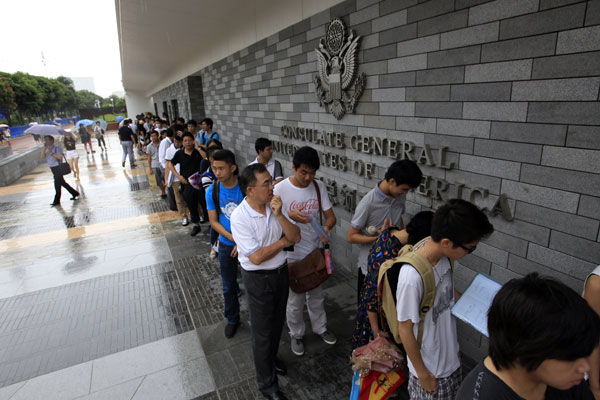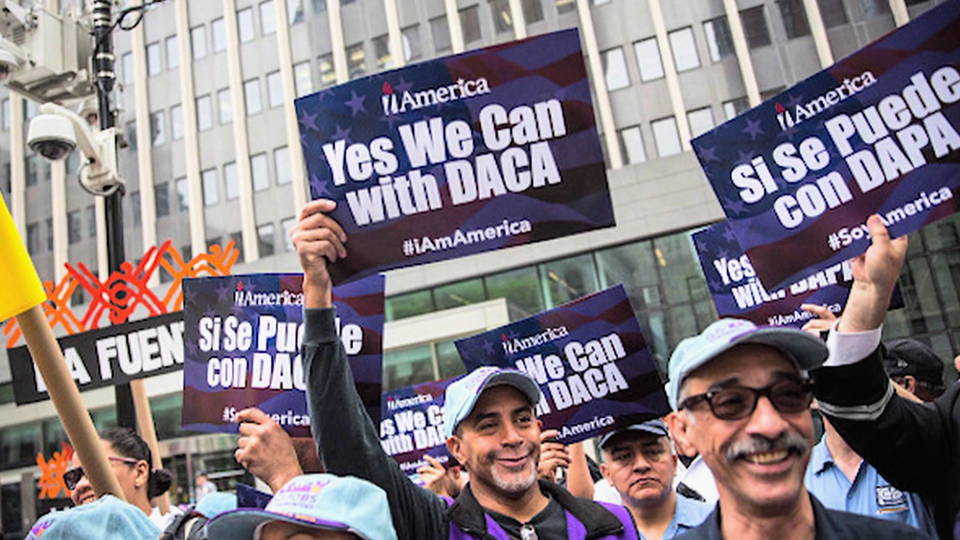On November 21, 2014, President Obama issued two Presidential Memoranda clarifying his previous broadcast of the executive actions on immigration, known as the "Immigration Accountability Executive Actions." These memos establish further directives for assimilating immigrants and refugees into the American society, as well as directives for updating and reorganization the visa procedures. The following is a summary of the family related components of the President's declaration, the other aspects of the memos will be discussed in Part II:
1. Enlarging the DACA membership. The present Deferred Action for Childhood Arrivals (DACA) program will be modified as follows: The existing age cap (31 as of the date of the original DACA publication) has been removed and the eligibility cut-off date by which an applicant is required have been in the United States will be changed to January 1, 2010 as opposed to the original June 15, 2012 date. In other words, no age cap. DACA and work permission will be permitted for 3 years. The new three-year time period applies to pending DACA renewal applications.
USCIS anticipates beginning to accept DACA applications under the modified program within 90 days of November 20, 2014.
2. Deferred Action for Parental Accountability (DAPA). USCIS will create a new deferred action procedure, comparable to DACA, for individuals who (1) have a U.S. citizen or LPR son or daughter (of any age) as of November 20, 2014; (2) have been continuously present in the U.S. since before January 1, 2010; and (3) were physically present in the U.S. on November 20, 2014 and are present at the time of requesting DAPA. All applicants are required to pass background checks and must not be labeled as an enforcement priority under the new memorandum.
DAPA will be granted for a three-year period.
USCIS anticipates that it will begin to accept DAPA applications within 180 days
of November 20, 2014.
Enforcement Priorities (these individuals will not qualify for these executives orders, except under certain circumstances)
a. Priority 1: Threats to national security, border security, and public safety. This includes suspected terrorists, people captured at the border, intentional gang participants (as well as those who were convicted of a gang- related offense), and convicted felons (excludes state/local status-related offenses).
b. Priority 2: Misdemeanants and new immigration violators. This includes individuals convicted of a "significant misdemeanor" or three or more misdemeanors arising out of three separate schemes (excludes traffic and status-related violations); people who entered unlawfully after January 1, 2014; and people who have "significantly abused" the visa or visa waiver programs.
c. Priority 3: Other immigration violations. Those who have been issued a final order of removal on or after January 1, 2014.
3. Extension of the Provisional Waiver Program. The USCIS will enlarge the I-601A provisional waiver application process. Currently, only immediate relatives (spouses and children of U.S. citizens and parents of adult U.S. citizens) who can demonstrate extreme hardship to a U.S. citizen spouse or parent are entitled to apply for a provisional waiver. USCIS will "expand access to the provisional waiver program to all statutorily eligible classes of relatives for whom an immigrant visa is immediately available. This action would seemingly include any family-based preference category beneficiary with an approved I-130 and a current priority date who can establish "extreme hardship" to a citizen or LPR spouse or parent.
This I-601A Provisional waiver will be set up by regulation. No specific time frame is stipulated.
Currently establishing extreme hardship to the U.S. citizen spouse is difficult at best as there are no concrete guidelines. Therefore adjudicators receiving cases with similar fact patters, make different decision.
Under the memo USCIS must provide guidance on the definition of "extreme hardship" that will clarify the elements that are considered in determining whether the "extreme hardship" standard has been met. USCIS is also to consider criteria by which a presumption of extreme hardship may apply. If this actually takes place processing of these cases will be easier and less expensive to the immigrant and family.
Learn more about immigration law: apsanlaw.com
Source : AILA InfoNet Doc. No. 14112446. (Posted 11/24/14)









